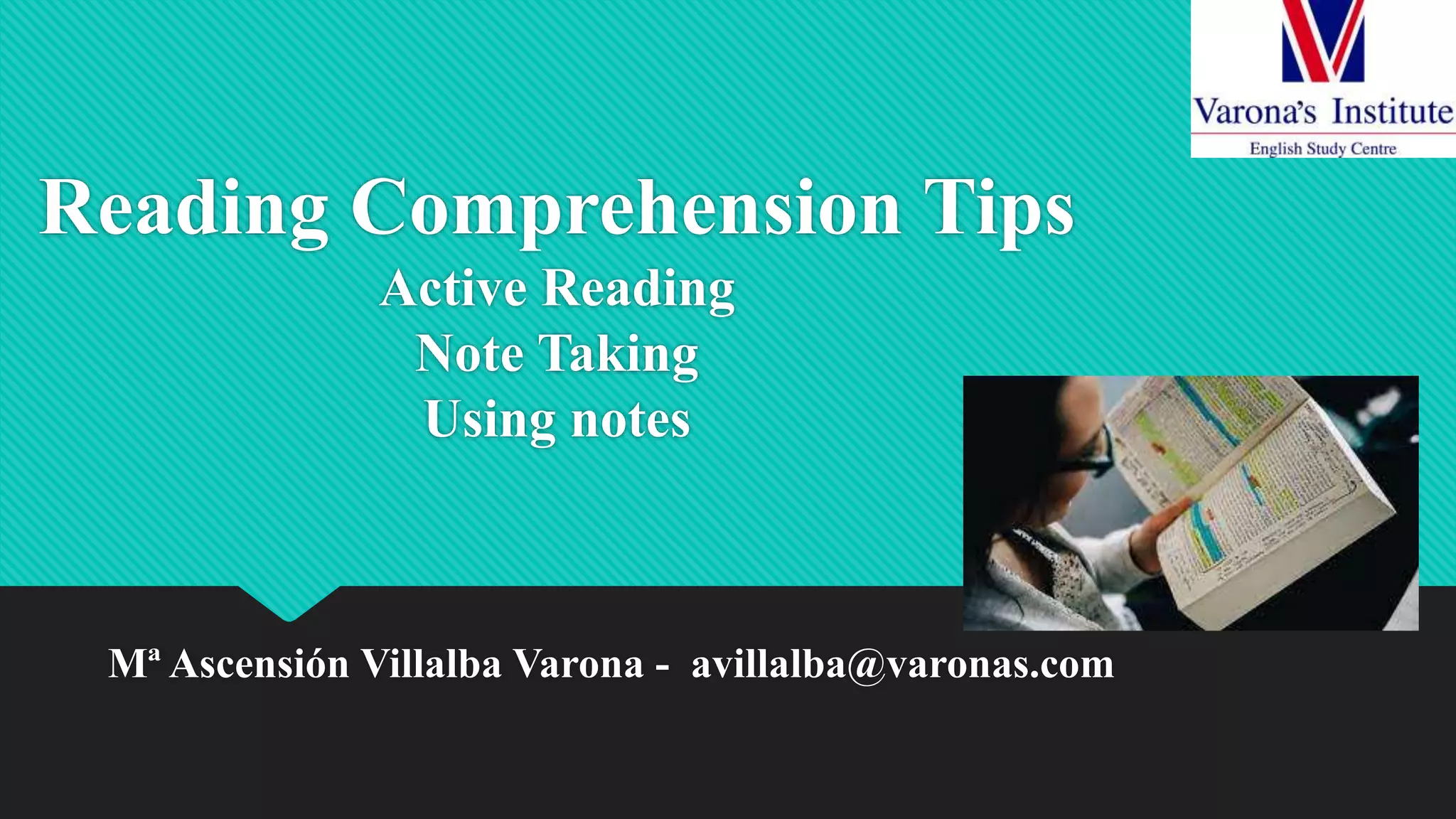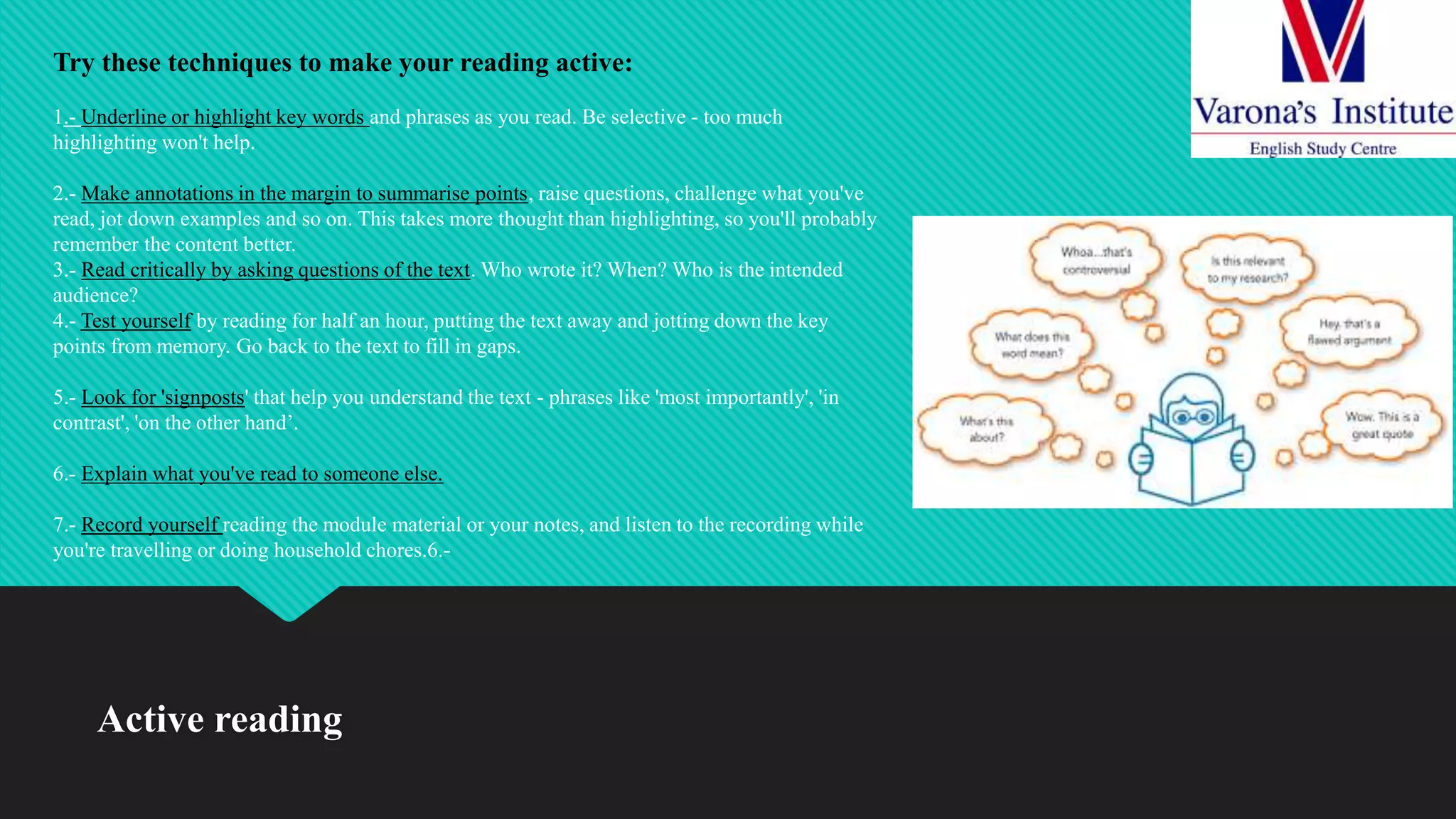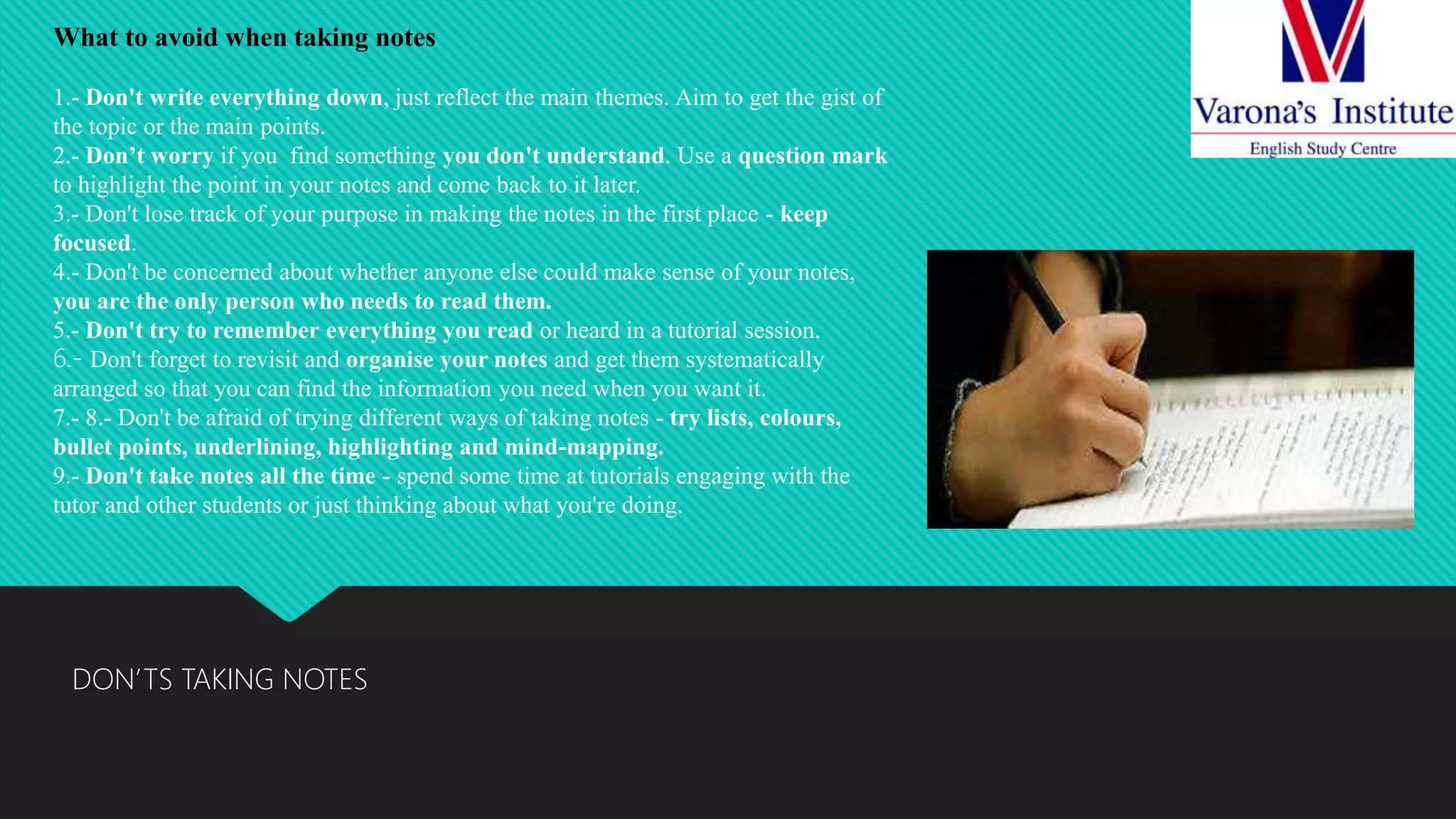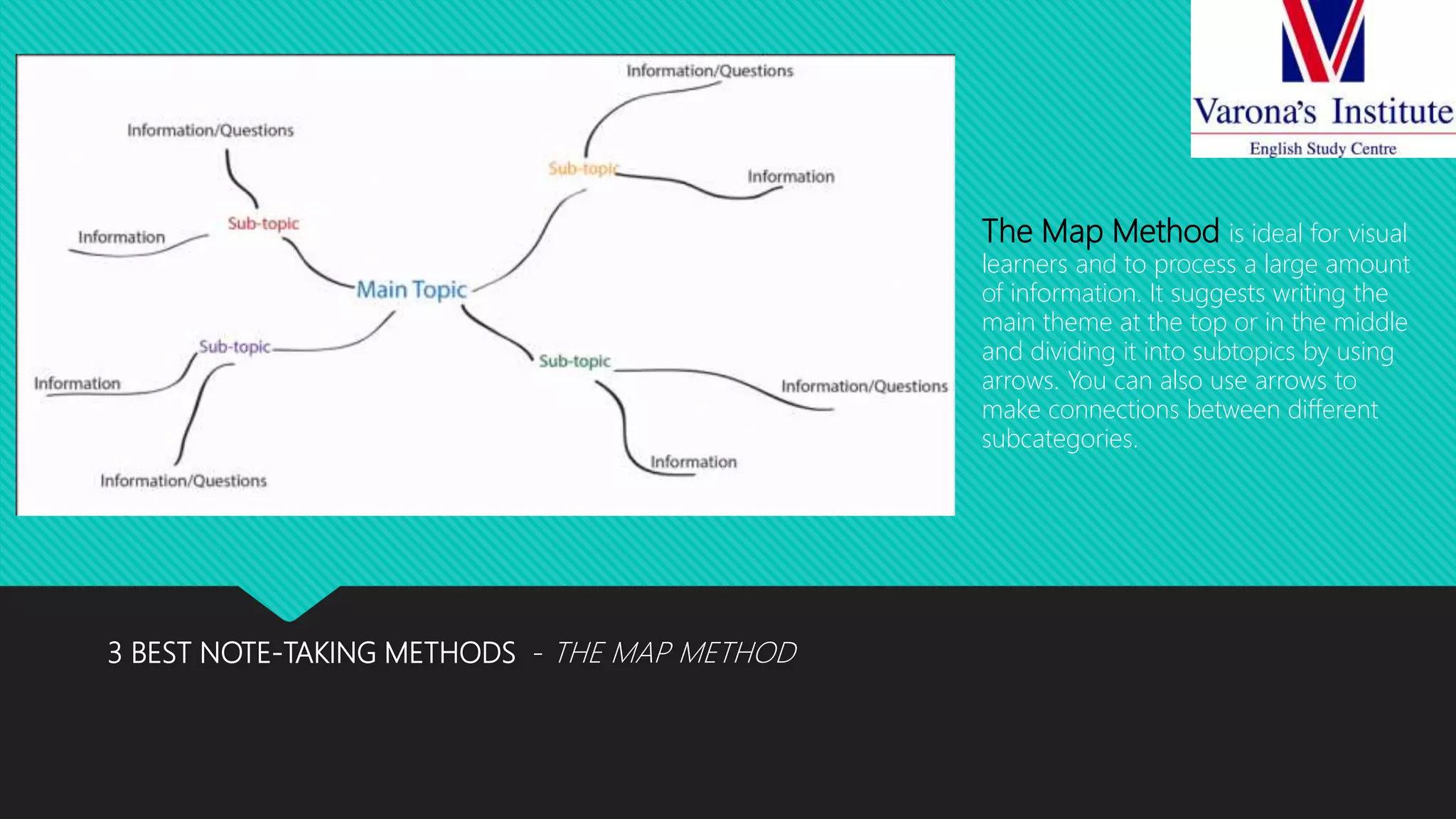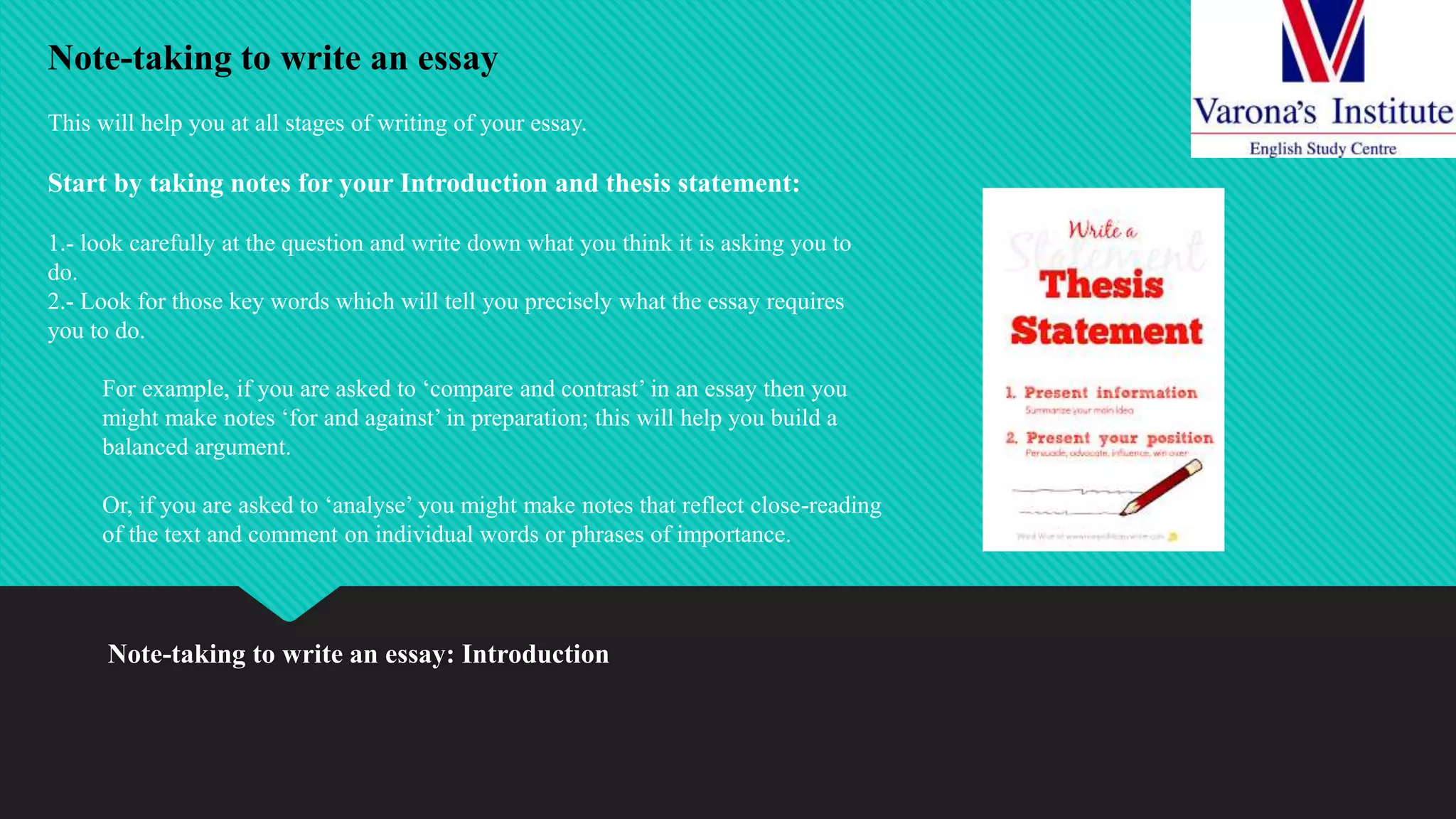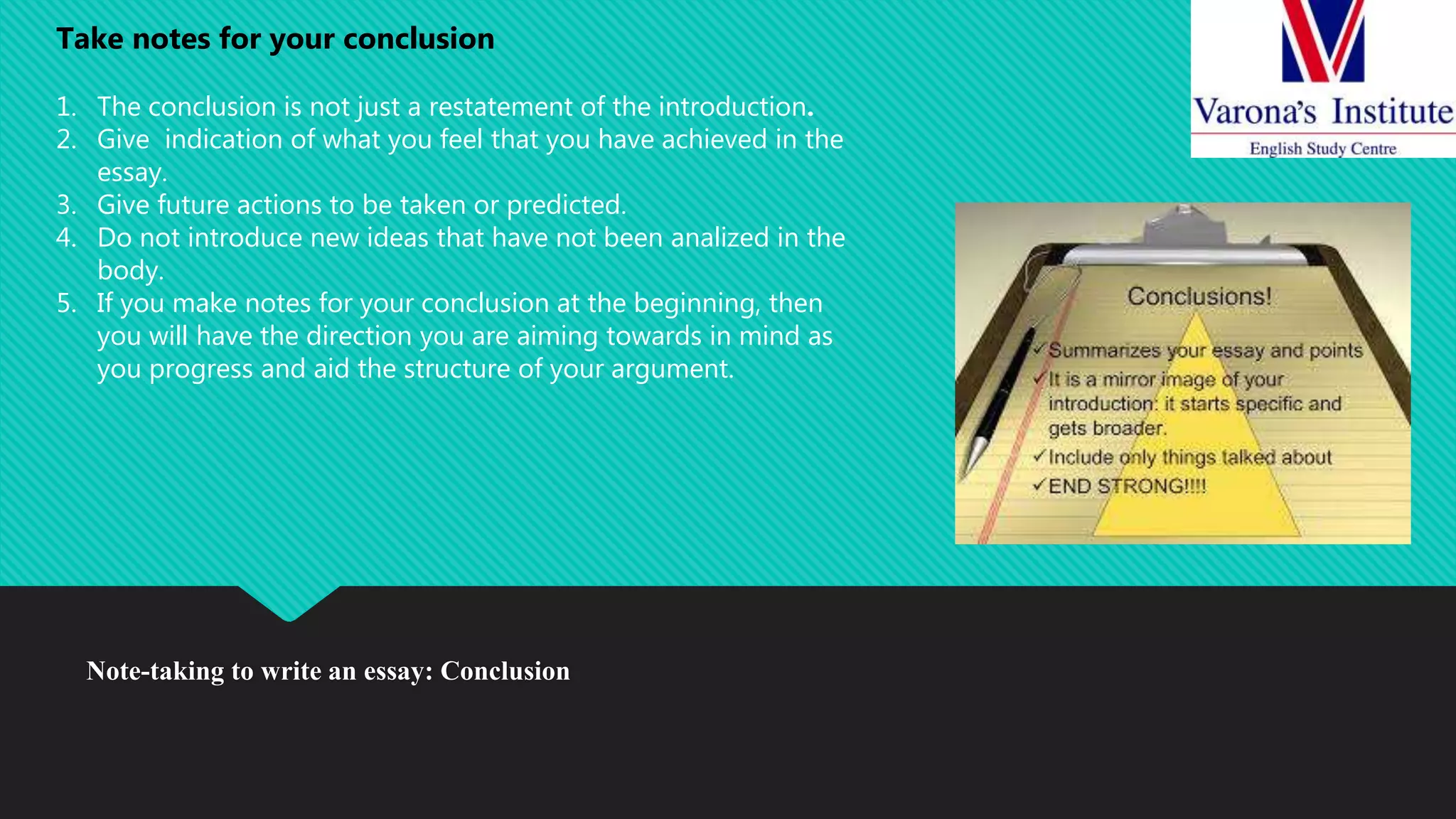The document provides tips on reading comprehension, emphasizing active reading techniques like annotating, asking questions, and using the SQ3R method. It also discusses effective note-taking strategies, including the map, boxing, and Cornell methods, tailored for various learning styles. Additionally, it outlines how to structure notes for essay writing to aid in organization and clarity.
